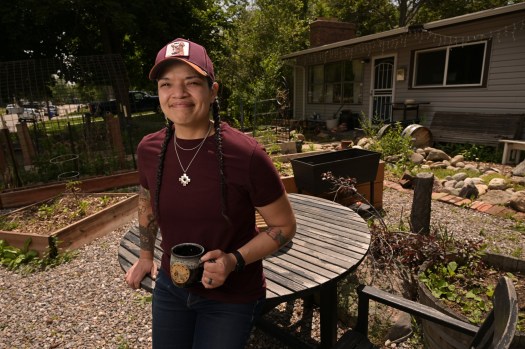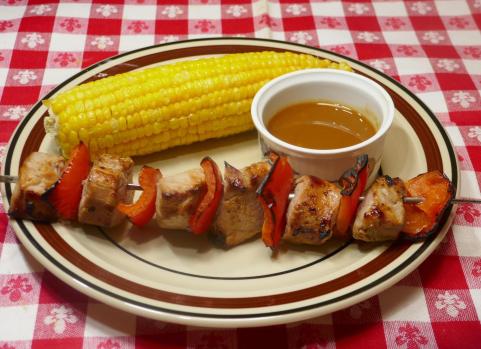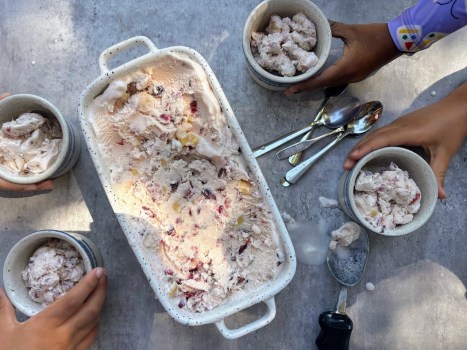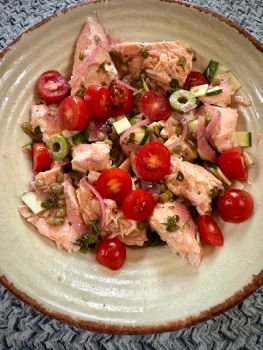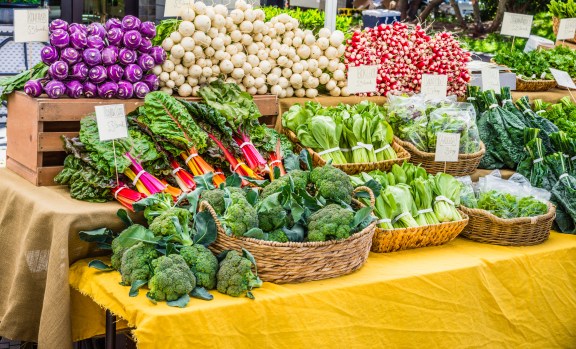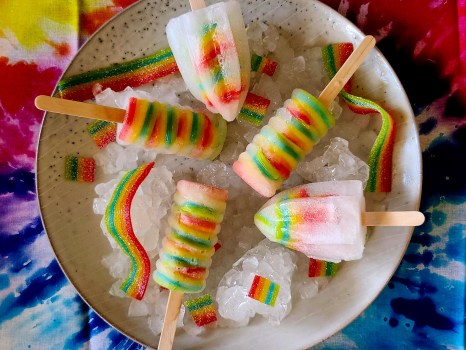The current age of Indigenous food, according to chef and historian Lois Ellen Frank of New Mexico, centers on contemporary cooks comprehending the ingredients and farming methods of their forebears, as stated in her 2023 cookbook Seed to Plate, Soil to Sky.
The decision of what constitutes New Native American cuisine and what should be served on plates currently rests with each Native American community and chef. In her preface, Frank stated that Navajo chef Walter Whitewater had given her advice.
In the Denver region, a number of young women cooks are doing just that by establishing food enterprises and cultivating gardens as a means of reestablishing a connection with the land and historical customs. From production to cultivation, they are establishing in real time what New Native American cuisine can be.
Their efforts are progressing. Following the forced relocations of the 19th century and the food distribution programs of the 20th century, Native American cuisine was reclaimed during a crucial period that Frank described in her cookbook as the most agonizing and challenging for health and wellness in the history of Native American cuisine.
The majority of the Indigenous diet in the Southwest and Four Corners region prior to the exploration of the Americas consisted of agricultural vegetables such corn, beans, and squash, which are frequently referred to as the “three sisters.” According to Frank, Native Americans were given government rations of mass-produced food that differed from what they were accustomed to after the nation moved them to reservations. She and a few of her coworkers believed it to be nutritional genocide.
Tocabe’s fried bread tacos, which are cooked with shredded bison, hominy, and roasted green chiles, have long been associated with Native American food in Denver. The restaurant was advertised as the first American Indian-owned and -operated Native American restaurant in metro Denver when Matt Chandra and Ben Jacobs founded Tocabe in 2008.
Micaela Iron Shell-Dominguez, 36, found out that Jacobs, a Native chef, was using some of his family’s recipes and knew she had to work there.
Iron Shell-Dominguez, an actor with the Annishabae Theater Exchange and an environmental and Indigenous activist, highlighted the importance of women in providing food for Native communities and underlined the sacredness of traditional foods. Her mother is from the San Luis Valley, and her father is Lakota.
She wrote in an email to The Denver Post, “I remember after working there for a while, I told Ben and Matt that I was so inspired by everything they did that one day I wanted to open and own an Indigenous restaurant just like them.”
Her partner, Sid Farber, is the chief dough roller at Moonshell Pizza Cooperative (www.moonshell.coop), a mobile pizza crew, where she is now a mother of two. According to her, it’s simple to build meals around the abundance of locally grown items like maize, berries, and sage. She stated that their buffalo chokecherry pizza is an example of this, as the chokecherry plant is indigenous to Colorado.
Indigenous groups outside of North America share Iron Shell-Dominguez’s multidisciplinary and holistic approach to her Native culture.
Related Articles
-
Quick Cook: How to make Cherry Almond Ice Cream at home
-
Recipes: Chocolate and peanut butter go great together in these treats
-
Recipe: Use cherries to make this relish for grilled meat
-
Letters between Market Basket board members shed light on ongoing company strife
-
Panzanella a fresh, tasty answer to stale bread
Born in Caracas, Venezuela, Andrea Condes, 39, was adopted into the US and raised there, pursuing a career in the culinary arts. The self-described Andean child actually landed in Colorado. Condes observed numerous parallels that were essential to the pre-colonial American experience, despite the continents’ vast distances from one another.
“How the land is respected, how people are treated, and how plant and animal relatives are just that—relatives,” Condes remarked.
Attracted to root crops such as the potato, which has Andean origins, she founded Four Directions Cuisine, a catering business (www.fourdirectionscuisine.com). She hosts meals twice a month through October as The Rooted Andina at her Arvada home, where she also produces her own plants.
She claimed that learning about Indigenous history and cuisine helped her connect with her native culture and bridge the cultural divide of living abroad.
“When I first started down this path, I definitely didn’t have a language for it,” Condes said. I didn’t realize at the time, but I now see that reestablishing a connection with those meals was a way for me to reconnect with myself.
Growing food was a way of life, and some chefs in New Native American cuisine are resuming what Frank refers to as food sovereignty. One of the gardening techniques Frank teaches in an attempt to restore what she refers to as traditional ecological knowledge (TEK) to Native communities is planting companion crops, like the three sisters.
Out of necessity, Navajo Nation member Narissa Ribera began farming. She had years of expertise baking cottage meals, was a jack-of-all-trades who learnt to garden as a child, and had always been fascinated by food systems.
The way of living evolved into the meal delivery business she launched three years ago, Chil Indigenous Foods (www.chil-indigenousfoods.com). She bakes cookies with ingredients grown by Indigenous harvesters and other treats, including as blue corn ice cream, from a commercial kitchen at the Wheat Ridge Center for Music and Arts in Wheat Ridge. (She will shortly open the arts center’s outside dining area.)
She grew the beans, corn, and squash (including Apache gourds and Lakota squash) along with sunflowers on two commercial pieces of land that the city of Wheat Ridge lent her behind the community garden. According to her, the crops won’t be ready for harvest for a few years.
In the meanwhile, Ribera said she is getting ready to start a Native tea and cookie company using the tea components she grows in her yard. She would like to see her brand in stores someday, and she won federal funding to aid with marketing.
“Representation,” Ribera declared.
Her primary goal is reestablishing Native people’s connection to their ancestral foods, but she also invites non-Natives who wish to learn about Indigenous cuisine and support her efforts.
She claimed that a lot of our food was among the many things that were taken from us. There are many Native people who simply have no interest in cooking.
She visits Jefferson County schools to teach children how to prepare Indigenous foods and asks her social media followers to assist in maintaining the Wheat Ridge gardens.
Ribera offered a box of cookies at a winter holiday market, together with a document explaining each one and the background of its contents. Having a genuine choice for Indigenous people to give to their friends and relatives brought her joy.
